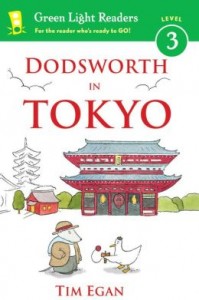Written and Illustrated by Deborah Kogan Ray
Publishers are starting to reveal fall titles, and fall is looking good!
Scientists agree that the people of the world began in one region and slowly scattered across the globe. But there is very little agreement how the scattering occurred. Just a lot of theories and speculation. After spending a year living among the Polynesians on Fatu Hiva, Thor Heyerdahl speculated that Polynesians crossed the vast Pacific on rafts from Peru. The folk stories and similar names were enough to make him wonder. Of course, few people believed such a journey was even possible. Heyerdahl and his crew proved it was possible. They lashed together balsa wood with hemp rope and fashioned a single mast and a bamboo cabin. Navigation was by sextant, and much of their food was from the sea. Rogue waves and a storm were nearly enough to cause them to issue a distress call from their radio, but they stuck with it and reached Polynesia. No one will ever know for sure that ancient people made this voyage, but Heyerdahl proved it could have happened.
The story so fascinates readers that Heyerdahl’s original account of the voyage was translated into seventy languages and is still in print sixty years later. Ray’s beautiful illustrations give the reader the feeling of being there for the voyage and encourage the desire to travel to the places mentioned.
Second graders will learn about anthropology, Polynesia, and rugged travel. They will also get a chance to hone literacy skills and learn that the seemingly impossible may not be.
 Title: The Impossible Voyage of Kon-Tiki
Title: The Impossible Voyage of Kon-Tiki- Author/Illustrator: Deborah Kogan Ray
- Published: Charlesbridge, October 13, 2015
- Reviewer: Sue Poduska
- Format: Hardcover, 40 pages
- Grade Level: 2 to 5
- Genre: Nonfiction, anthropology
- ISBN: 978-1-58089-620-7



